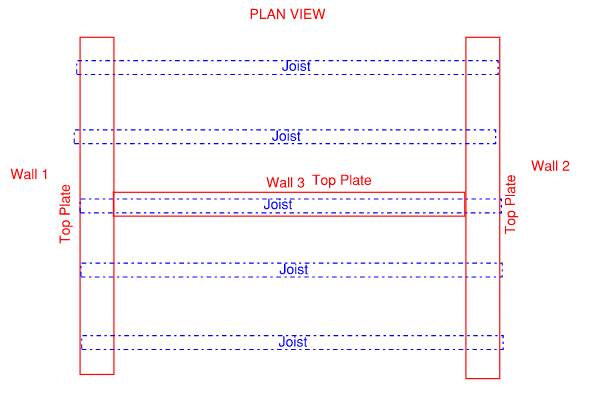Hello
I have two walls with floor joists running between them (refer attached diagram, walls 1 and 2).
One of the joists runs between the two walls (i.e. walls 1 and 2) and ontop of another wall (parallel to the joist, i.e. wall 3).
Diagram:

I've been assured by a structural engineer that the joists have been designed in such a way, that the parallel wall is not load bearing.
However, top plates of all 3 walls are at the same height, won't the joist bear some load on the wall running parallel and this would be considered a load bearing wall?
Just after an explanation to satisfy my own understanding
I have two walls with floor joists running between them (refer attached diagram, walls 1 and 2).
One of the joists runs between the two walls (i.e. walls 1 and 2) and ontop of another wall (parallel to the joist, i.e. wall 3).
Diagram:

I've been assured by a structural engineer that the joists have been designed in such a way, that the parallel wall is not load bearing.
However, top plates of all 3 walls are at the same height, won't the joist bear some load on the wall running parallel and this would be considered a load bearing wall?
Just after an explanation to satisfy my own understanding
